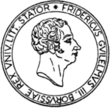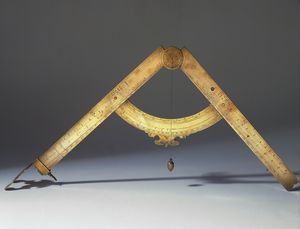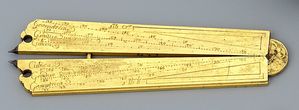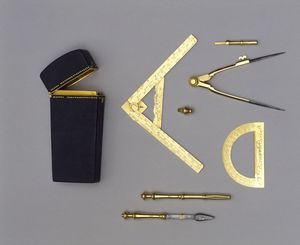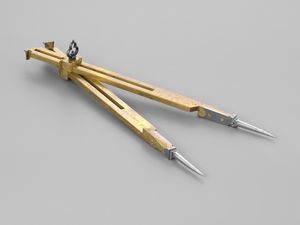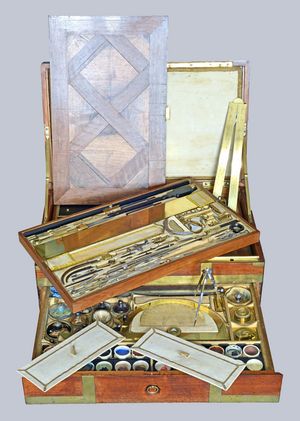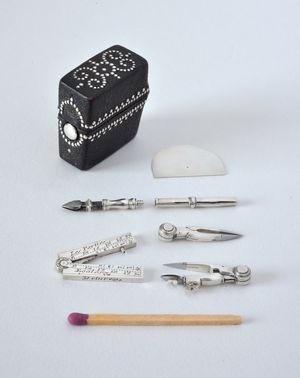The exhibition „Sectors and Precious Mathematical and Drawing Instruments of the 17th and 18th Century" aims to commemorate these very rare and extremely valuable instruments that shaped applied arithmetic over a long period.
Sector by Galileo Galilei, brass, Padua ca. 1606. Museo Galileo, Florence.
As an analogue calculating instrument in combination with mathematical sets and drawing tools, the sector was a practical companion for architects, engineers and also scientists for more than two centuries.
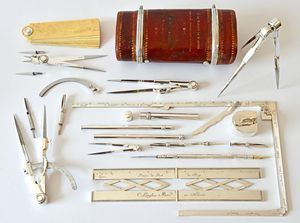
Drawing set by Claude Langlois and Charles Clément, silver, Paris ca. 1726. It was used by the architect Ange J. Gabriel (Petit Trianon for Madame de Pompadour at Versailles, Place de la Concorde). Collection Rocca.
This exhibition presents outstanding sectors and mathematical sets that show us the beauty and artistry of scientific instruments in their most compelling form.
Sector out of the mathematical set by Franciscus Fiebig, gilt-brass, ca. 1640, Germany / Netherlands. Astronomisch-Physikalisches Kabinett, Hessen Kassel Heritage.
The outstanding quality of these rare objects allows a deep insight into the sophisticated and partly lost manufacturing techniques that only a few artist dynasties mastered who devoted themselves to this subject over many generations. However, it is not only the uniquely fine aesthetics of these instruments that particularly appeal to us, but also their development and mathematical bases.
Mathematical set with sector by Nicolas Bion, Paris ca. 1700. This is the oldest known set in gold. © RMN-Grand Palais (Musée du Louvre) / Jean-Gilles Berizzi.
The pinnacle of precision instrument making in the early modern period was the sector, developed by famous mathematicians such as Galileo Galilei and Jost Bürgi, which could be used in a variety of ways.
Precursor of the sector by Jost Bürgi, brass and iron, before 1600, Switzerland. Astronomisch-Physikalisches Kabinett, Hessen Kassel Heritage.
This exhibition takes the first in-depth look at the historical significance of these instruments and brings together the most valuable gems from the Arithmeum and Europe's most important collections on the history of science, such as the Musée du Louvre in Paris, the Museo Galileo in Florence, the Astronomisch-Physikalisches Kabinett, Hessen Kassel Heritage, Germany, the École National des Ponts et Chaussées in Paris, the Galerie Delalande in Paris and the Collection Rocca.
Mathematical chest by Jacques Canivet, containing the largest collection of mathematical and drawing instruments (160 pieces), Paris 1768. Collection Delalande, Paris.
What better place for such an exhibition of the finest preserved mathematical and drawing instruments than the Arithmeum?
The smallest set known in silver by Jean Baptiste Delure, ca. 1698, Paris. A masterpiece with a sector measuring only one French inch (2.7 cm)! Collection Rocca.
You can find an introductory video to the exhibition here:
A German, French and Italian version of the video is also available.

